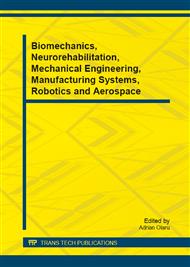p.144
p.150
p.156
p.165
p.173
p.179
p.185
p.191
p.197
Model Driven Key Performance Indicators Concepts for Manufacturing Execution Systems
Abstract:
The intention of this paper is to give some methodical approach in Key Performance Indicators for Manufacturing. Within this it covers the defining of Key Performance Indicators (KPI) and Manufacturing Execution Systems (MES). The purpose is to analyze the influences of equipment, personnel and inventory to the production process and how to apply them in making decisions. This paper gives an overview about definition of Manufacturing Execution Systems (MES) and the area of standardization of object models. The KPI for the manufacturing operations management include the areas personnel, equipment, inventory and production process. It contains also a collection of key performance indicators (KPI) to be used in the area of production control and monitoring to assess and define the targets of production processes.
Info:
Periodical:
Pages:
173-178
Citation:
Online since:
December 2012
Authors:
Price:
Сopyright:
© 2013 Trans Tech Publications Ltd. All Rights Reserved
Share:
Citation:


